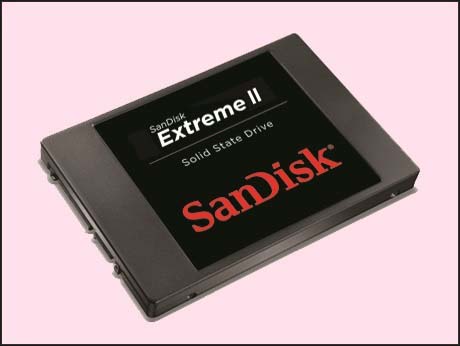
Solid State Drives have been trying to play catch-up with hard disk electromechanical drives for almost a decade now. Price per GB of storage as well as performance was a challenge -- but it looks as if solid state flash technology has bridged the gap -- and let's face it -- gone beyond what hard drives can do in certain areas.
SanDisk's Extreme II SSD is a case in point. Let me try and illustrate how SSD has allowed memory designers to innovate and offer enhanced read-write efficiencies: The bulk of its storage is achieved using Multi Level Cell (MLC) NAND flash memory -- but every unit of the Extreme II ( which comes in three sizes: 120 GB, 240 GB and 480 GB) includes just under 1 GB of a non-volatile flash cache which the makers call nCache. This relatively tiny capacity kicks in when the operating system accesses the storage in small access blocks of around 4 KB -- which is quite often. Since the minimum block size of the bulk NAND storage is 1 MB or more, it is clearly wasteful to allocate such blocks. The nCache accumulates such small write cycles or segments at high speed and then consolidates them to larger MLC sections of the NAND Flash memory array.
In fact the Extreme II SSD offers three layers of storage: the NAND flash which is the bulk storage; the nCache -- and a small cache of DDR DRAM -- approximately 1 MB of DRAM for 1GB of NAND.
It is this multi layered storage technology which enables an SSD like SanDisk's to go beyond what was achievable with electromechanical hard drives when it comes to read write speeds of 500 MBPS and beyond.... great for high speed apps like photo and video storage.
The Extreme II SSD costs Rs 14,750, Rs 26,100 and Rs 49,500 respectively for 120 GB, 240GB and 480 GB. It is backward compatible with 2.5 inch and 3.5 inch SATA drives and you can order it with the necessary hardware to mount in notebooks or desktop PCs..... what one might call a 'solid' advance on PC storage options... even if a bit pricey when compared to hard disks
Anand Parthasarathy Nov 17 2013